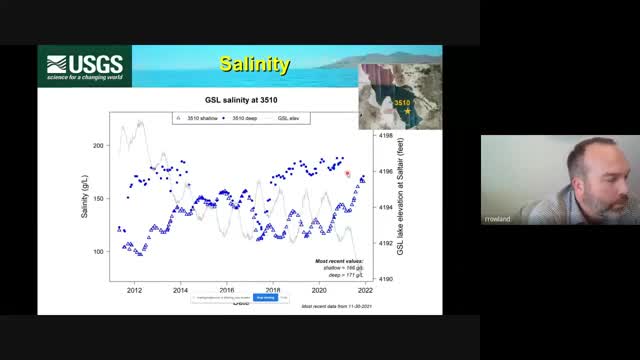Salinity Crisis Deepens as Great Salt Lake Brine Layer Erodes
September 18, 2024 | Utah Office of Tourism, Utah Government Divisions, Utah Legislative Branch, Utah
Thanks to Excel Chiropractic and Scribe from Workplace AI , all articles about Utah are free for you to enjoy throughout 2025!

This article was created by AI using a video recording of the meeting. It summarizes the key points discussed, but for full details and context, please refer to the video of the full meeting. Link to Full Meeting
Christine, a key presenter, emphasized the importance of understanding salinity variability and its historical context. She outlined two main questions guiding their analysis: the potential impact of mixing the upper and deep brine layers on salinity concentrations, and the changing salt mass in the south arm of the lake. The analysis indicated that if these layers were to mix, an average increase of approximately 5 grams per liter in salinity could be expected, although this varies with lake conditions.
The meeting also addressed the relationship between salt mass and salinity, noting that despite a decrease in the absolute salt mass in the south arm due to northward flow, salinity levels are rising due to reduced water volume. This paradox raises concerns about the lake's ability to maintain ecological balance, particularly for species like brine shrimp that are sensitive to salinity changes.
Experts pointed out that since 2018, the salt mass in the south arm has been increasing, despite the shrinking water volume, indicating that more salt is entering the south arm than is leaving. This trend is seen as a return to pre-culvert closure conditions, with the potential for further ecological implications as the lake's management strategies evolve.
The findings from this meeting underscore the critical need for ongoing monitoring and adaptive management of the Great Salt Lake to address the challenges posed by changing salinity and water levels, ensuring the health of its unique ecosystem.
Converted from Great Salt Lake Ecosystem Program Technical Advisory Group - December 15, 2021 meeting on September 18, 2024
Link to Full Meeting
Comments
View full meeting
This article is based on a recent meeting—watch the full video and explore the complete transcript for deeper insights into the discussion.
View full meeting

